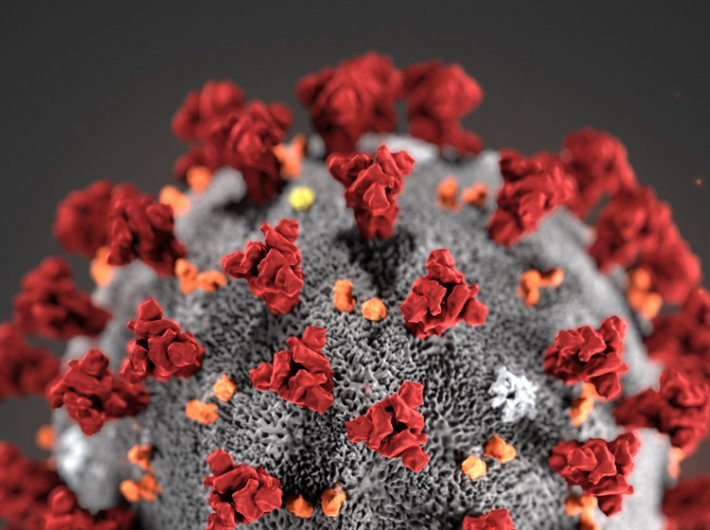Digitisation has helped the healthcare sector to reach the unreachable rural areas of the country
In 2020, before the coronavirus pandemic which got the entire world at a pause, the Indian healthcare sector was in progress at a steady but slow pace. The pandemic boosted the rate, and within a year, the sector made a leap into the future – something that would have taken the industry another five years to achieve had the pandemic not been a catalyst to the whole situation.
Several specialists have stated that the pandemic expedited digitisation in the healthcare sector. Since the lockdowns ordered people to stay home and made them cautious of in-person consultations, people shifted to online consultations, distant monitoring, and telemedicine assistance.
Digitisation has magnified the access and features of healthcare. Moreover, digitisation has helped the healthcare sector reach the unreachable rural areas of the country.
While the global health situation created a tremendous burden on the already short-staffed and inadequate healthcare system, it compelled the Indian healthcare system to progress at a brisker pace in the past year. Healthcare and health-tech startups performed a significant role in this mission.
The coronavirus outbreak and the pandemic proved to be a much-needed slingshot to accelerate consumer preference towards digital consultation, e-pharmacy, distant homecare assistance, and e-diagnostics.
Had it not been for the pandemic, this transformation would have taken another four to five years to reach the country's remotest locations.
While healthcare saw advanced digitisation on numerous fronts, like telemedicine, movable wellness, distant monitoring, electric medical records, and smart appliances, it was telemedicine that clutched the lead role in health-tech.
The pandemic highlighted that the healthcare sector was inadequately staffed and structured to provide everyone with proper medical consideration since the ratio was one doctor for every 1,445 people in the country. After the state of lockdown across the country, telemedicine played a critical role, allowing the people access to quality and affordable healthcare options.
The healthcare sector faces three key concerns today, and telemedicine fits in well to solve all three. While its practice in India began a couple of decades ago, it indeed reached its true potential only in recent months.
Recognising the lulls in the healthcare section and the surplus of possibilities available to produce solutions, the government committed full support towards advancing the sector.
The surge in health-tech and digitalisation of healthcare gave the government the groundwork required to launch the ‘National Digital Health Mission’, in which every Indian will be granted a health ID, which will help secure and enhance the healthcare access they receive. This further intensified the demand and necessity to work towards the digital medical record. Apart from obtaining prompter medication judgments, the collected data will also assist in examining and examining the disease and illness inclinations across the country, in a way helping people, healthcare institutions, and the government take precautions.
The coronavirus was the catalyst in expediting, setting up and initialising the telemedicine and teleconsultation services in the country. Between the pandemic-led lockdowns, the government promptly drove telemedicine guidelines to recognise the true potential to remotely rendered healthcare assistance.
With the increase in the government assistance and the growth in the startup ecosystem setting the stage to be better prepared for future health crises, the Indian health-tech sector is expected to grow at an intensified pace and is projected to reach a valuation of $5 billion before 2025.
Aside from the telemedicine and teleconsultation assistance, the healthcare sector also saw a rise in the selection of Artificial Intelligence (AI)/ Machine Learning (ML), notably in the diagnostics section. AI has the resources and potential to reconstruct the healthcare system in India. AI can advance the healthcare provided for those who need chronic care management, care delivery, clinical judgment, supportive self-care, wellness and diagnostics.
Beyond all this, the selection of intelligent machines and distant monitoring apps are also on the rise, allowing doctors to remotely observe patients using wearable healthcare devices and conduct critical assistance during a crisis using offline partners. With an expansion in the need and demand for remote monitoring assistance, home care has also played a significant role in health-tech. For example, numerous doctors were monitoring Covid-19 patients with less severe symptoms from their homes during the pandemic. Using Internet-of-Things (IoT) gadgets and mobile applications, doctors can receive real-time updates about patients without being physically near them. In addition, according to specialists, post-operative care in some cases might be done from home via remote monitoring services in the future.
Furthermore, the spread of the internet and the necessity to access digital resources have paved the way for mobile monitoring devices and distant monitoring of those who need medical assistance but stay in remote parts of the country.
The pandemic compelled people and the government, in general, to be more cautious about the healthcare infrastructure in the country; not just in the primary cities but also in secondary and tertiary areas as well. In addition, the much-required digital transformation in the healthcare sector can bridge numerous recesses in the healthcare system and is also anticipated to bring in unique funding opportunities in the health tech sector.
Satish Singh is Founder of My Lyf Care.
